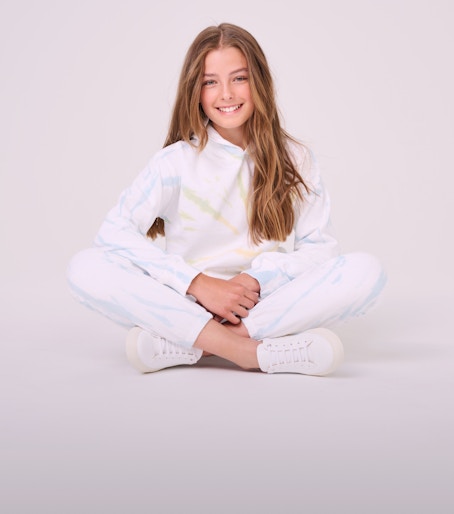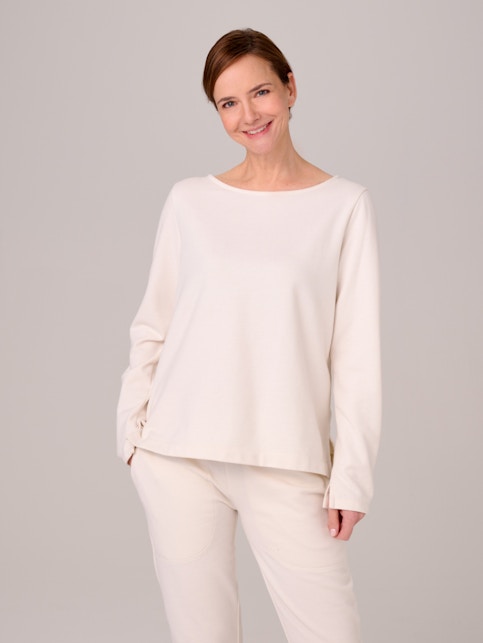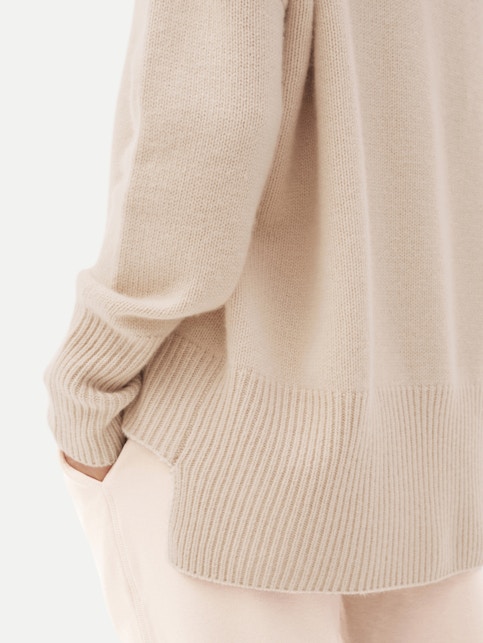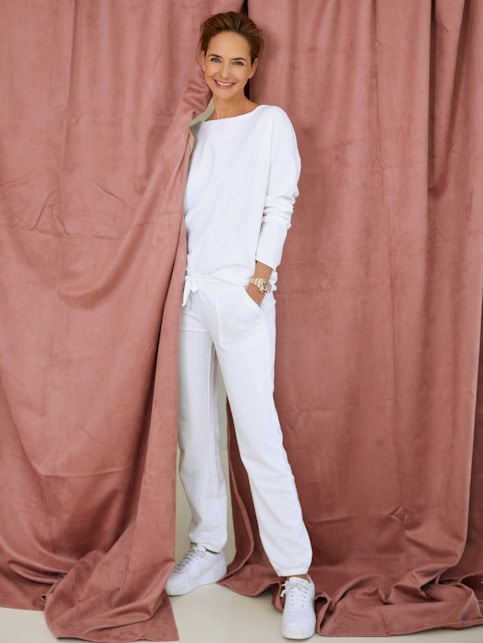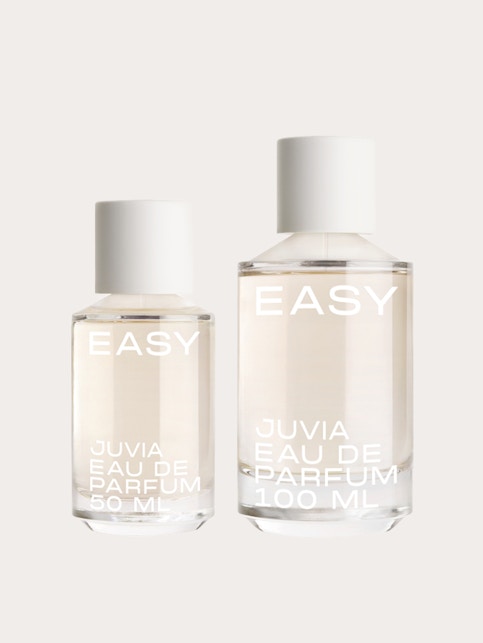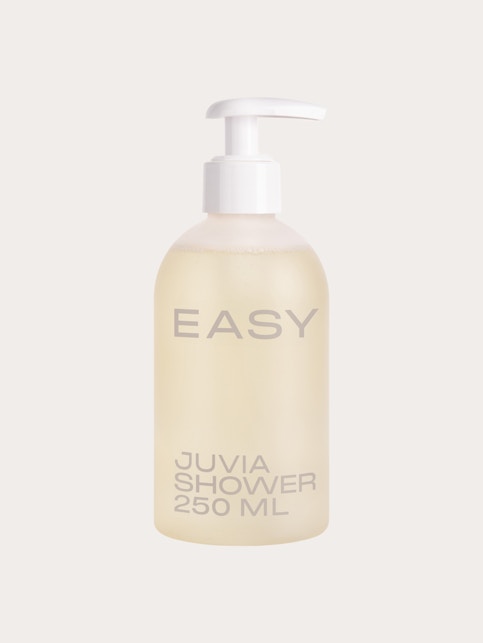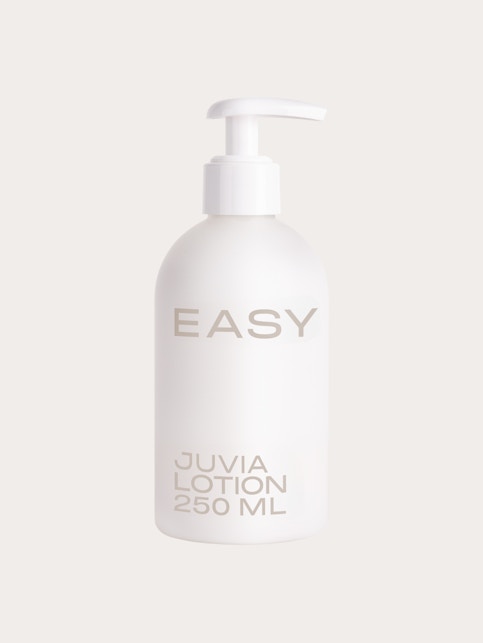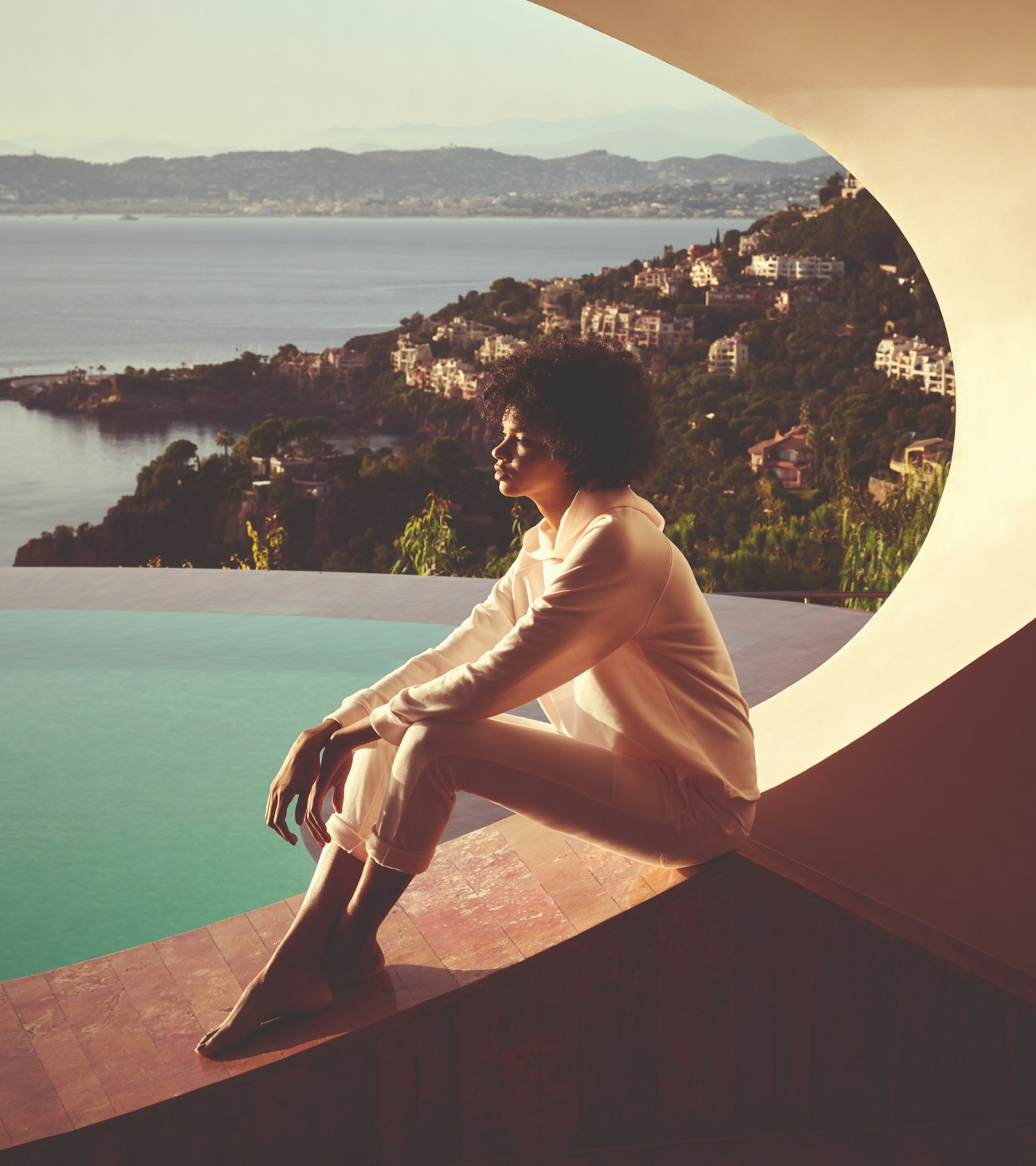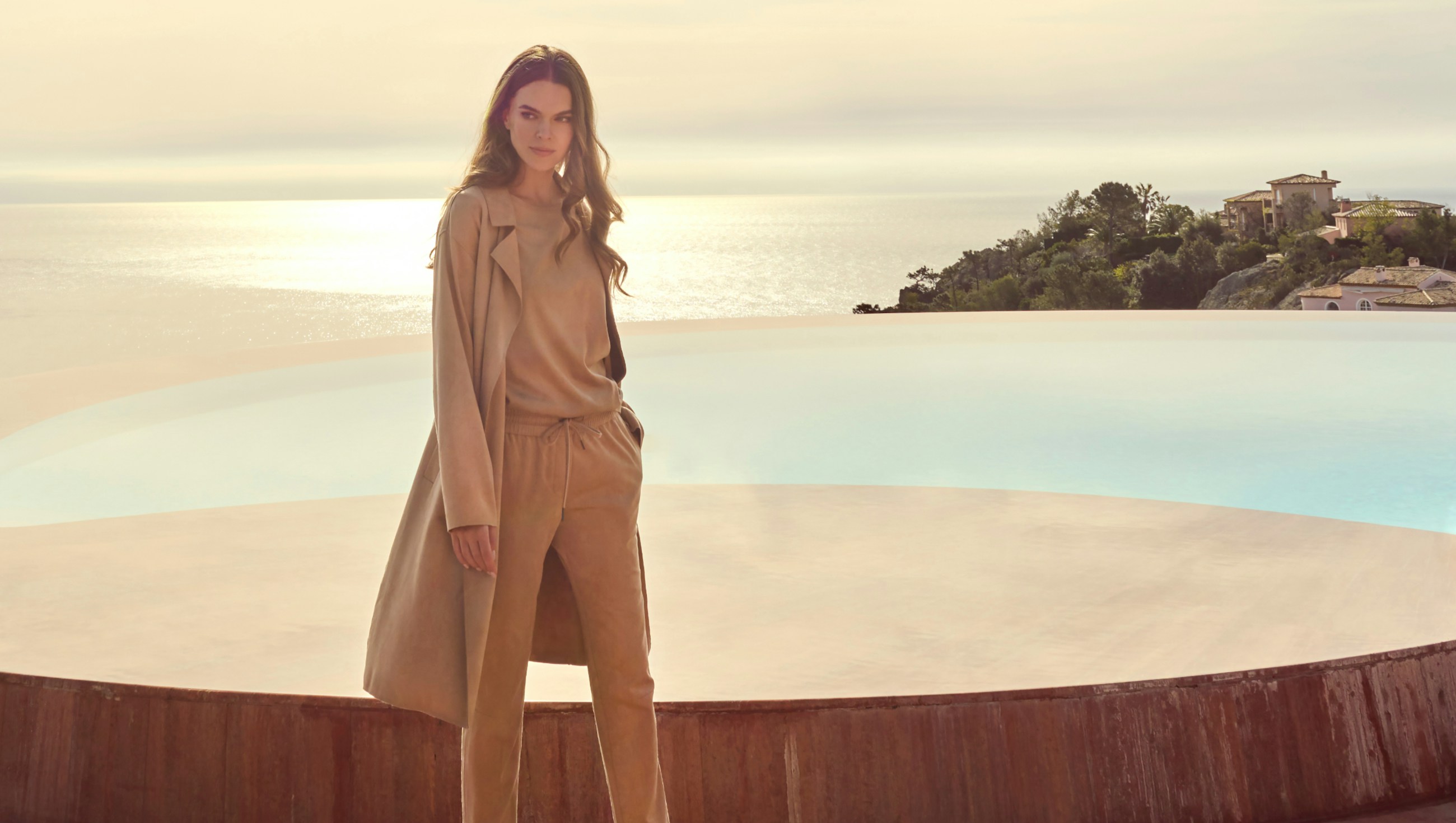
LE PALAIS BULLES
JUVIA GOES TO CANNES
To shoot the latest collections, we went to France and were lucky enough to photograph our new loungewear styles in a unique location: the Palais Bulles! The "Bubble Palace" is located on the French Riviera in Théoule-sur-Mer near Cannes and was designed in the 1970s by Hungarian architect Antti Lovag. The Palais Bulles is a significant example of organic architecture, and the designers created this futuristic building to give residents and guests the feeling of living in another world. The curved, harmonious forms contribute to this approach, taking their shape from nature and in harmony with the landscape. The architect himself reports that he designed the Palais Bulles as an organic structure that blends perfectly into the surrounding landscape and that seems to float up into the sky from a rock.
A FUTURISTIC MASTERPIECE
To us, this huge-almost-overwhelming building seems like a futuristic place. For example, the multi-layered complex has different levels from which you can look from the top floor down to the rooms on the ground floor. The countless possibilities to take a good picture are inspiring and make our creativity flow! For example, you can see the ocean from nearly every room. The large roundly-shaped windows give a good view of everything – the designers installed some of them even underwater or partly underwater. There are several swimming pools, including an infinity pool. In addition, the morning and evening lights bring their own natural glory reflecting a unique atmosphere, which we have also tried to show in our pictures. All in all, the impressive architecture of this magical place provides the perfect scenery for the new designs of the current collections.
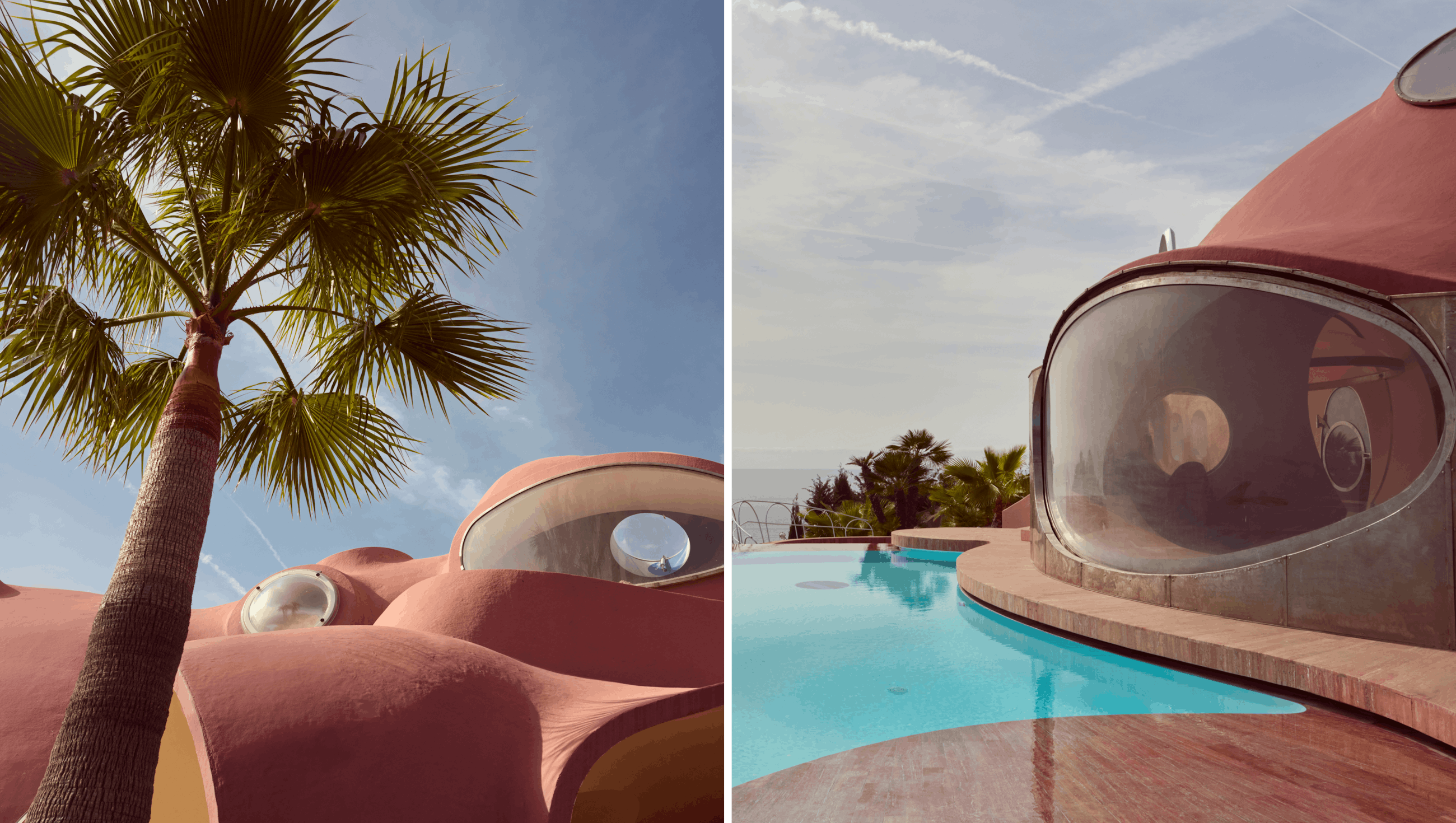
WHAT’S THE STORY BEHIND THIS BUILDING?
LA MAISON BERNARD
The origins of the oversized mansion date back to the seventies when Pierre Bernard started planning the futuristic bubble palace. Bernard was a French entrepreneur who made a fortune working in the automotive industry. However, the industrialist and the architect in charge, Antti Lovag, already knew each other from earlier times, as they had worked together on Bernard's family home La Maison Bernard. This recently renovated and restored house, located on the Côte d'Azur in Théole-sur-Mer, was designed for the four members of the Bernard family, offering communal spaces on the one hand and private living areas on the other. The Bernard House is considered the most developed building on which the architect could test his ideas and perfect them according to the principles of organic architecture. The siblings and successors Isabelle and Jean-Patrice Bernard take care of the domicile these days and established a foundation around the Bernard House in 2013, intending to protect and further develop the architectural work of Antti Lovag and Pierre Bernard. Artists are accepted at regular intervals for a maximum period of six months, for example. During this time, the chosen artist has to create an artwork that corresponds with the aesthetics of the domicile and its natural environment. The selected artist receives a grant and is allowed to live in a separate apartment with an attached studio during this period to work on the project and finalize the task. In the spirit of the pioneers Pierre Bernard and Antti Lovag, the Maison Bernard will always be a place of creation and open to new ideas. The property is also open to the public during visiting hours.
BACK TO PALAIS BULLES
However, after completing the family home in the late seventies, the duo dedicated their full attention to the far more ambitious project Le Palais Bulles. Always wanting to create natural environments and having a soft spot for spherical spaces, architect Lovag adapted his designs entirely to human needs, going beyond conventional structures. His masterpiece, however, would almost not have been completed had Bernard's family not turned to Pierre Cardin after his death, in whom they saw a confidant who shared Pierre Bernard's aesthetic vision. Intrigued by the project of building a house entirely in circular planes, Cardin acquired the property in the early nineties. Cardin and Lovag, who shared the distrust of the right angle, united and made the futuristic building in Théoule-sur-Mer world famous.
"Round shapes have always inspired me," says Cardin, who invented the famous "bubble dress" in the 1950s.

WHO IS PIERRE CARDIN ANYWAY?
THE INNOVATIVE NEW DESIGNER
Pierre Cardin was born as Pietro-Costante Cardini in San Biagio di Callalta near Treviso, Italy, on July 2, 1922. He grew up in France as the youngest of seven children and began his career at 22 as a fashion designer in Paris. Today he is considered one of the most important fashion designers of the 20th century. Cardin completed a total of 76 professional years until his death in 2020. After working with Elsa Schiaparelli and Christian Dior, he became the first couturier to establish his own haute couture company in 1950, producing ready-to-wear dresses for the world market. Without Cardin, the concept of "prêt-a-porter" – meaning high-quality and fashionable ready-to-wear clothing for a wider audience – would never exist. Cardin's creations were always elegant but never complicated. His women's fashions, intended for everyone and available as ready-to-wear in department stores, were characterized by a simple style suitable for everyday wear. His designs were the opposite of the flared skirts with narrow shoulders and tight waists he had designed while still at Christian Dior, which were also completely new designs after the Second World War and known as the New Look. His revolutionary goal was to create practical fashion for modern and emancipated women. The innovative young designer also influenced fashion futurism like no other. The sixties, the so-called space age, were his great time: he loved the future and technology and translated his ideas into iconic spaceman looks such as his legendary bubble dress. Then, just ten years later, Pierre Cardin became the first well-known fashion designer to create fashion for men.
A DESIGNER WITH A BUSINESS SENSE
Being a talented designer with good business sense, Cardin expanded rapidly and established his Pierre Cardin brand. For example, he was the first in the industry to sell licenses. This approach involved giving the name 'Pierre Cardin' to various licensees who were allowed to market the specially created products and sell them under his signet. The idea that fashion should be something elitist was not for Cardin. Soon, you could find his designs outside the fashion industry as well – with Cardin being the multi-talented visionary he was – designing watches, home textiles, porcelain, ceramics, cutlery, record players, furniture, and even car interiors. No industry could stop him – he bought the castle of the Marquis de Sade in the southern French village of Lacoste in 2001, for example, had it renovated and arranged concerts and festivals there. Despite local opposition, he had high hopes of turning the small village into a culturally revitalized place – much like the famous hot spot at the time Saint Tropez. Until his death, the multi-faceted Cardin company, which included a conglomerate of hotels, media, castles, and ships, did not belong to any holding company and no shares were sold. Pierre Cardin himself lived in Théoule-sur-Mer and worked on his collections until old age. He died in December 2020 at the age of 98.
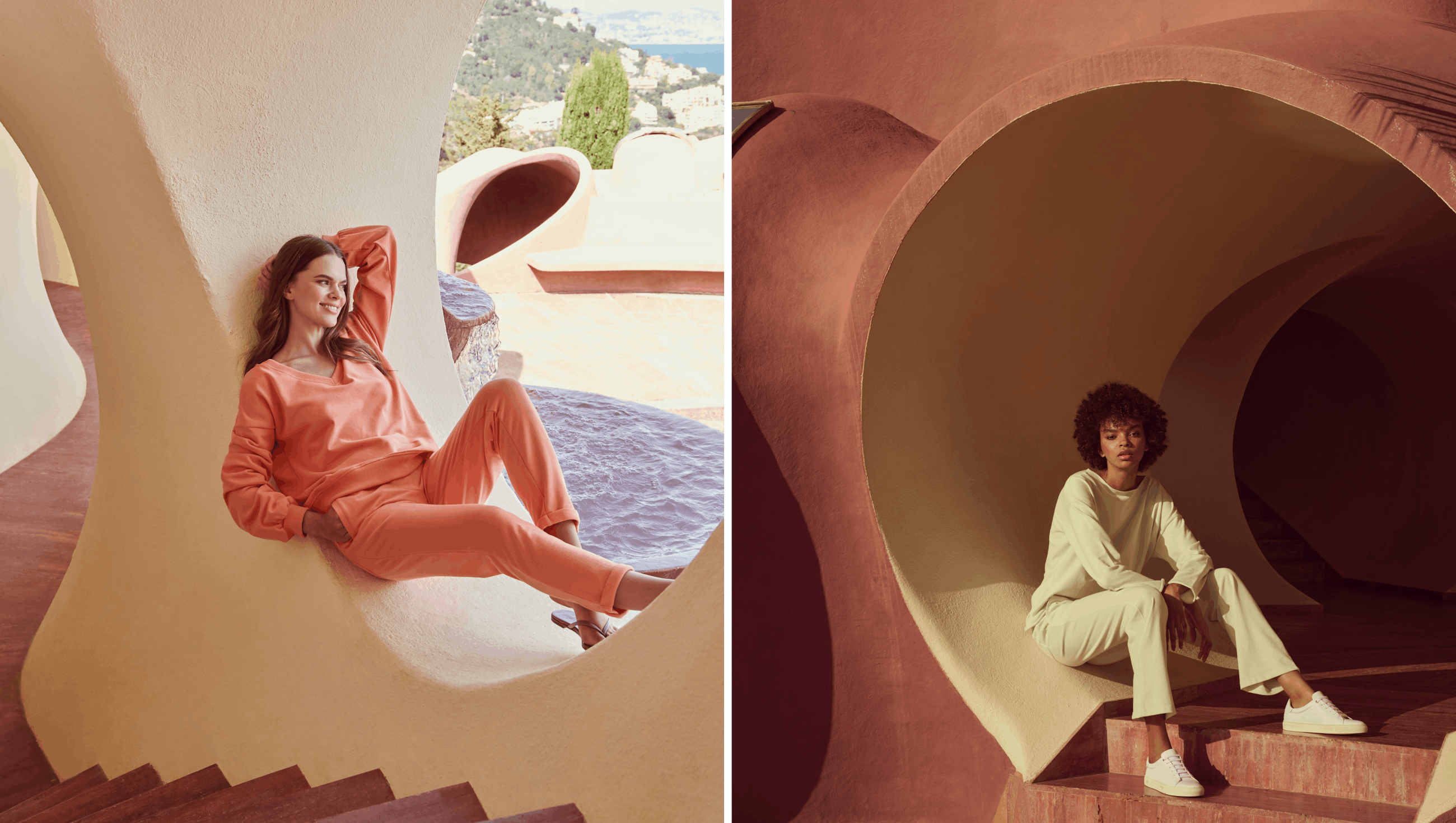
"When there is a right angle, it is like a shadow that creates an unbearable negative feeling. It's like being in prison." A. Lovag
LE PALAIS BULLES
A CREATIVE OASIS OF PEACE
Pierre Cardin owned quite a few houses, restaurants, and hotels, but no building was as extravagant as the Palais Bulles, with which the designer created a creative oasis of calm and energy. "Here I can live according to my ideas," said Cardin, for whom the world of architecture was a constant source of inspiration. Antti Lovag, born in Hungary in 1920 and educated in Sweden and France, had a similar approach. An advocate of dynamic structures, the architect, like Cardin, loved flowing, organic forms and experimented with materials that could be bent and changed when building the Bubble Palace. He started working on his project entirely in the seventies aesthetic and expanded the design so that the building ended up with 28 bedrooms, multiple bathrooms, and large-scale living areas. He even created an amphitheater adjacent to the palace. Cardin gave equal rein to his creativity in developing the interiors. He designed his pieces in round organic shapes since, according to the designer, conventional furniture would never have worked.
A PLACE OF INSPIRATION WITH SPECTACULAR SCENERY
About Antti Lovag, in whom he had found an accomplice, he said: "Antti Lovag's vision corresponded exactly to the architecture I would have liked." The construction time of the iconic masterpiece was twenty years in total! However, the long work process was worth it because the original bubble palace, which the fashion house Pierre Cardin still owns, has been on the list of historical monuments of the French Ministry of Culture since 1999. Today, the Palais Bulles is still a creative place of inspiration, a venue for photo shoots, and a popular location for events and parties. After all, this is why we are so pleased and proud that we were allowed to take pictures of our loungewear in such a spectacular setting.

REFERENCES:
https://www.awmagazin.de/wohnen-stil/palais-bulles-das-kleine-paradies-von-antti-lovag-und-pierre-cardin
https://www.palaisbulles.com/dream.php
https://www.baumeister.de/antti-lovag-palais-bulles/
https://www.falstaff.at/living/nd/organische-architektur-naturnahes-bauen/
https://www.pierre-cardin.de/ueber-uns/designer
https://www.lexploreur.com/en/blog-en/la-maison-bernard-antti-lovag/
https://www.iconichouses.org/specials/maison-bernard
https://www.wallpaper.com/architecture/antti-lovags-maison-bernard-renovation-by-odile-decq-unveiled
https://www.sueddeutsche.de/stil/pierre-cardin-mode-frankreich-nachruf-1.5161015


